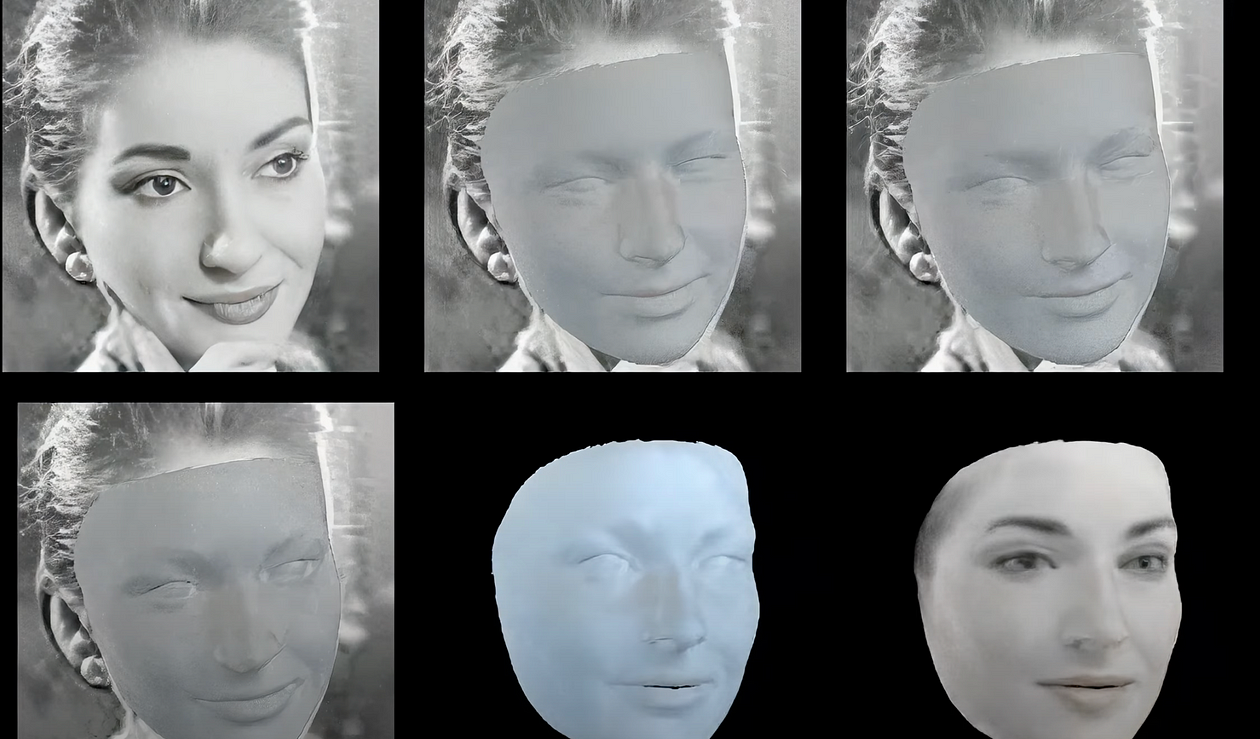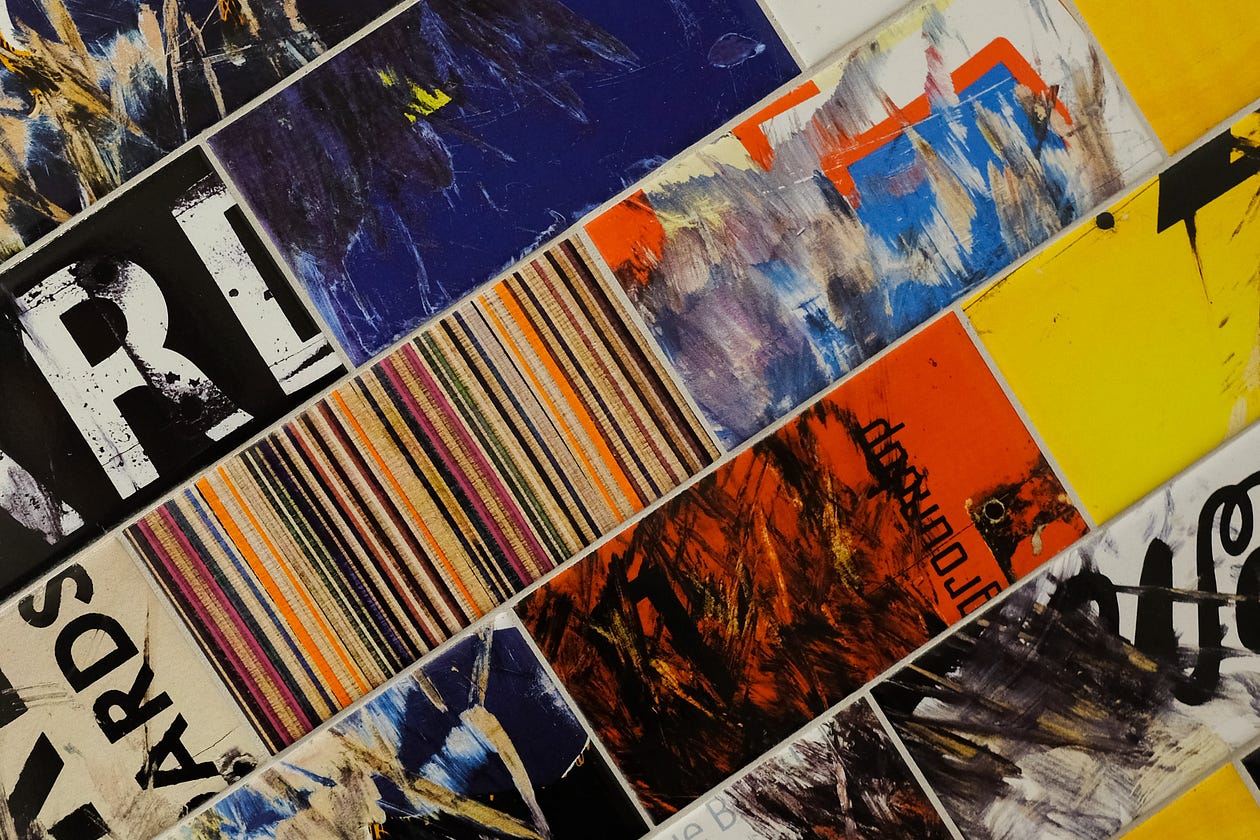Elon Musk and the problem with immortality

Interactive internet-based technologies are transforming the way in which we understand death, grieving, and coping with loss. Online communication together with changes in social and religious attitudes in western society has created a space where the individual is part of the collective. The transition from analog to digital combines the private with the public and the real with the virtual.
Feeding the digital afterlife zeitgeist are tech giants who are eager to build a synthetic heaven where big egos go to die. The idea of a synthetic heaven is offensive to many with long-standing religious beliefs even though those same beliefs are as synthetic as digital data.
We are living in an AI-powered Matrix future and the richest man in the world agrees. Recently a Twitter user commented that Elon Musk uses the platform to construct a digital replica of our personality in a digital afterlife. Musk responded:
“Maybe we’re already in it.”
Immortality is not impossible and certainly not for big tech billionaires like Thiel, Bezos, and Musk. Way back in 2012 Paypal founder Peter Thiel stated that:
“Death is a problem that can be solved.”
American data scientist, Emily Gorcenski sees a future where humans will be separated into digital personalities living on in computer servers and a labor class maintaining the computers.
“To understand the Metaverse means you have to understand that rich techno nerds genuinely believe they will be able to upload their consciousness before they die.”
Changes in social structures in western society such as social geographical mobility, urban density, and religion have changed how we grieve and how we use technology to facilitate our grieving. Technology has fed our human desire for connection. Mobile, digital communication and its pervasiveness in everyday life is a useful communication tool in coping with grief. How do we explore ways in which technologies are used to process grief and death and how does technology affect this process?
What is the Digital Afterlife?
The digital afterlife is the idea of a vertical space where data, assets, legacies, and remains reside as part of the cyber soul and assumes a digital presence, (Savin-Baden, 2021).
Digital grief concepts were developed to make sense of the ways in which digital technology is harnessed to commemorate and memorialize the dead. Digital grief practices are acceptable norms through media and digital media. Kasket (2019) argues that online persistence and the ongoing presence of the data of the dead lead to a more globalized, secularized, and ongoing persistence of the dead online on social media and other networks.
Cultural shifts toward restless, posthumous existence and death are in stark contrast to the Victorian image of death as sleep or rest, (Hallam Hockey, 2011). The restless dead online interrupt previous limitations of cemeteries with static headstones and finite biological death. In contrast, digital death is dynamic and interactive, (Savin-Baden, 2021).
Media mourning is collective grief surrounding big events like the death and funeral of Queen Elizabeth 11. Mourners grieve the passing of such a famous and long-serving figure because they have invested memories that signpost their own lives with the Queen’s mediated life experiences.
What is the Death Tech Industry?
Do you want to live forever? Then the 21st century is for you. Death online is influenced by commercial platforms that are monetizing death. There are massive commercial interests in shaping our afterlife presence. The digital afterlife industry has limited ethical conventions and future regulation is needed with regard to copyright/ownership/IP, data protection, access, and agency.
Technologies’ role in mediating the presence of the dead is embedded in human practices. Right now big companies own your data and survivors have little access to their loved one’s digital archive unless permission was granted prior to death. The death industry is ripe for disruption and Ballater (2015) suggests a reinterpretation of how an economic system perpetuates grief.
“It is rather technology’s role as a commodity or means in the production process that is the driving force in shaping the presence of the dead” (Ballater, 2015).
Do AI-powered products help families cope with grief or do they exploit people at their most vulnerable? Death tech companies are slow in their scalability, ethical, and reputation concerns because services are evolving at a breakneck pace.
What happens to our data after we die? Does humanity have a right to post-mortem privacy and dignity so that our avatar can’t be used by third parties? In the physical world, the body has a right to respect and human dignity in death. Is violation of human dignity applied to the digital afterlife of the dead?
What is Intentional or Accidental Immortality?
Do you fancy transferring your digital assets to a digital avatar for digital immortality? And what digital traces will be left behind if you do nothing? Accidental immortalization includes your digital footprint on social network sites like Facebook.
Who owns your footprint after you die? Is it big tech companies or the loved ones you’ve left behind? Access and ownership cause unintended consequences that shift societal norms and behaviors in online spaces. Mourning is mediated and managed in different social spaces. Are you prepared for the inevitable and will you take a deletionist or preservationist stance?
What is the long-term impact on the bereaved when third parties control technology platforms and your data, make the rules, govern who has access, how the data is presented, and just what is inside those unread terms and conditions?
Deletion of the dead’s online footprint on social networks and email accounts is seen as a second loss by families. Bassett (2020) compares the fear of a second loss with Victorian mourning jewelry. A locket housed photographs of family and it was worn around the neck as an object of remembrance like a memory worn.
In the 21st century, we cling to mobile phones populated with photos, videos, and text messages of our loved ones. What happens to the data when we die? For the bereaved, fear of the loss of data creates a new form of anxiety and becomes a form of anticipatory grief at the thought of losing the data of a loved one.
What is Memory?
Memory and memorialization interrogate the notion of communication in the digital age. Technology makes us forgetful. What happens when memorials are no longer memory but present and interactive? What happens when lifelike avatars interact long after the body is gone? What happens to the externalization of the self as an entity incarnation, agent, and interlocutor?
“We’re going to become increasingly non-biological to the point where the non-biological dominates and the biological part is not important anymore” Ray Kurzweil.
Kurzweil’s idea of singularity, of a time when memory and consciousness will be uploaded and technologized, also describes the world we are living in now. A world of rapid technological change that has an impact on all sectors of human society and one that is hurtling faster and faster, changing life as we know it forever.
The digital afterlife is reassuring because it gives those who grieve another means of keeping alive the memory of a dead person. But it’s also creepy because the ultimate extension of memory, a memory without forgetting that blends with mimesis, takes us into the uncanny valley.
What is Digital Bereavement?
Since early 2000, digital bereavement has grown exponentially on social networks and other online communities. Disenfranchised grievers have no social recognition of grief and many people use Facebook to help with loss because they lack the support they need in a society that expects them to get over death and move on. Online networks give validation and connection with others like many online networks where people can find their tribe.
Alves (2001) argues for the need to examine the impact that the internet and social media are having in the evolution of grief. Practices such as End of Life video conferencing can cause anxiety for those not used to the technology. There is a need to consider the emotional impact of digital afterlife engagement with the bereaved online. Ongoing visibility can be distressing. Alves says it’s vital to create spaces of debate, discussions around death and dying, and an understanding of the values that people place on cyber mourning.
Grief online is continually acknowledged, communicated, and legitimized. Mitchell et al (2012) see online memorials as the driving cause behind prolonged grief. These surrogates for the deceased not only accommodate grief but perpetuate grief, “by enabling the deceased to persist,” (Mitchell et al 2012).
“The web affords an ongoing grief that is unhinged partially from longstanding ideas of ‘closure,’ a way of and a separation of the living and the dead,” (Mitchel et al, 2012).
According to Klastrup (2015, there’s a lack of shared norms on social media, resulting in the compartmentalization of death. A death that is no longer shared with a religious vocabulary or belief can’t be vocalized when coping with bereavement, leaving the deceased uncertain about how to grieve properly.
Warner (2018) suggests that new norms like mourning online are constantly changing and renegotiated by users of social media. The traditional hierarchy of the family is usurped by online users. The digital world opens more spaces for mourning and it is difficult to know the true impact on the bereaved because it is often hidden.
What is Grief?
Grief is a personal and long-term process, a coping mechanism, that alleviates the difficulty of mourning. When used in the grieving process, technology plays a normative role in the ways in which death and grieving are understood and experienced.
Grieving is a primal and human condition but for a large part of the 19th and 20th centuries, grief in social settings has been associated with seriousness, depth, and somberness. The Victorians were masters of grief and etiquette and grief was a communal and public affair.
The second half of the 20th century reflected the breakdown of communal society and its obsession with the individual. After the funeral, the bereaved were left to grieve on their own and returned to their everyday lives with little disruption.
In the 21st century, the internet became a place for people to find community. The bereaved could share their own experiences and validate those they’d lost by sharing photographs and videos and they could find support from those with similar experiences. In-person social interaction is difficult for grievers unless they have a social group but online is different. It’s a place where the bereaved can find a network of similar people to connect with through online grief communities.
The Meaning of Grief
I recently spoke to a social care researcher in her late 20s who was so traumatized by her grandmother’s stroke which had debilitated her family for nine years, that she refused to entertain any future stroke care projects. I shared with her my similar experience when I was in my 20s after my father died and how it contrasted with caring for my mother twenty-five years later. I was older but no more equipped to deal with bereavement.
Modern mourning is isolated. The continuing bonds theory has replaced Kubler-Ross’s (1969) model of states of grief and mourning. In the 20th century, grief stages involved the process of letting go and breaking bonds with the deceased, shutting them away in boxes and cupboards, out of sight and mind. The continuing bonds model sees the relationship with the deceased as changing and evolving, rather than breaking, (Klass et al, 1996).
Not everyone grieves in the same way. The continuing bonds approach renegotiates the bereaved’s relationship with the dead. Grief is a unique experience that is affected by the connection we have with the deceased and our life experiences. Continuing bonds is just a theory and it is important not to normalize grief and mourning through theories alone as grief is both personal and contextual.
Stages of grief apply to other losses and trauma that aren’t about death, such as divorce or moving to another location. Stages have been adopted, recognized, and accepted by health professionals. More recently, different theories of loss and mourning have been suggested that resonate more with the digital world.
The stages method prescribed the breaking of bonds and the separation from the dead. Klass et al (1996) argued that the relationship with the deceased changes, rather than breaks. Grief is not a linear process to be worked through and contained when we move on. Instead, the relationship with our loved ones is redefined so that some kind of attachment is normal. The focus is on the changed relationship, a continuing bond with the deceased, rather than letting go and moving on. Klass argued that maintaining a connection with the dead is a common aspect of bereavement in all current models of grief, reflected by the use of digital and social media, (Tonkin, 1996).
Growing around grief suggests that grief doesn’t disappear over time, instead of moving on from grief, people grow around it. Dual process grieving introduced by Stroebe and Schut (1999), is based on loss orientation and restoration orientation.
In the orientation to network grief, a new mixed model method study by Brubaker, Hayes, and Mazmaian (2019), evaluated how people positioned themselves and their expression of networked grief. What emerged from the study was a new Cyclical Model of Grief, pertinent to the digital age that is dynamic and continuous, (Savin-Baden, 2021).
Researchers argue for the need to ensure that grief is contextualized. Social media and the sequestration of death is the idea that the organization of death and the engagement of death practices have become separate from society, (Mellor and Shilling, 1993). We have become a “death-denying society” (Becker, 1973: 43).
Such sequestration results in compression of the grieving process instead of a recognition of the need for a long grieving process whereby acceptance is not just about the acceptance of death and dying but about a different kind of life. Mandrell disputes the theory of sequestration and he argues for the importance of spatial dimensions of grief, mourning, and remembrance.
Walter (2019) argues that there is a need to consider body, spirit, and mourners together, what he calls “the pervasive dead,” which removes the idea of the dead’s separation from living society and instead, “bonds continue and the online dead can appear at any time,” (Walter, 2019: 389).
What is Identity?
Identity is a complex and dynamic process that regards the individual, her relations, and the contexts she moves in. Identity is something that one does. The individual narrative is the result of ongoing interaction between the most significant relationships, that contribute to the creation of an interwoven fabric of ontological stories.
Ontological narratives express personal identity. Writing or narrating our stories is a process that involves others. The role of others is witness to our being in and of the world. On the internet, identity technology produces and reproduces identity.
The law has not caught up to the development of artificial intelligence but give it time. For the information we share, store, and use online, our digital identity is often left unattended after death, adrift on social network platforms.
What is Legacy?
The purpose of grief is to construct a durable biography that allows survivors to continue to integrate the deceased person into their lives and find a safe place for them, (Walter, 1996). Photographs, videos, social networks, letters, and physical belongings are tangible and intangible vessels of remembrance.
After your physical body dies, what legacy will you leave and what will happen to it over time? What tangible and digital traces will you leave behind? For most of us, our lives will be anonymous and forgotten, tossed away in junk stores like tattered Victorian photographs.
We have come to expect the traces of a dead person’s life to settle into fixed spaces and objects. And we assume their legacy, the lessons they passed on or the example they set as parents will one way or the other come to shape the lives of those they were close to.
When someone dies, there’s a risk that their most precious objects will die with them. The very objects are an extension of an individual’s own unique personality. The uniqueness of any given physical object existing in one place and time, with its own fragility, subjected to wear and tear of time makes the bond established with its owner, irreparable. Therefore, the “internal aspect of the object is its storing rather than its object-ness,” (Savin-Baden, 2021). In other words, legacy.
Those personal objects that do remain after an individual’s death cannot help but preserve the memory of the deceased. For these reasons, death cleaning reaffirms our understanding of the relationship that links life with death because it presents us with the reality of what is left behind after we are gone. Photos, letters, and clothes will exist after we die.
The Swedish approach of Death Cleaning prepares us for the inevitable in a calm and rational way. Belongings and keepsakes are put in order and organized to keep those items we want to keep on for posterity, to carry on for future generations, our unique and deep connection with our loved ones’ objects.
But how many of us will be prepared to die? Those with a terminal illness, perhaps? The elderly certainly ready themselves for the inevitable. My father and aunt both produced autobiographies but their writing had more to do with wanting their lives to have purpose together with the human need to never be forgotten. My father died after completing just one chapter but my aunt had more time to prepare. She gave away her possessions and donated her research to the Library of Congress.
It has fallen on me to carry on their legacy and I take up the challenge with great passion and determination. We are family.
Ginger Liu is the founder of Ginger Media & Entertainment, a Ph.D. Researcher in artificial intelligence and visual arts media, and an author, journalist, artist, and filmmaker. Listen to the Podcast.
Bibliography
BASSETT, D.E.B.R.A.J. (2022) Creation and inheritance of digital afterlives: You only live twice. S.l.: SPRINGER NATURE.
Kasket, E. (2019) All the ghosts in the machine: Illusions of immortality in the Digital age. London: Robinson.
Klass, D. (1996) Continuing bonds: New understandings of grief. Taylor and Francis.
Klastrup, L. and Tosca, S.P. (2018) The networked reception of transmedial universes — an experience-centered approach, IT. Statsbiblioteket. Available at: https://pure.itu.dk/portal/da/publications/the-networked-reception-of-transmedial-universes-an-experience-ce (Accessed: November 24, 2022).
Kübler-Ross Elisabeth and Byock, I. (2019) On death & dying: What the dying have to teach doctors, nurses, clergy & their own families. New York, NY: Scribner.
Kurzweil, R. (2018) The singularity is near: When humans transcend biology. Richmond: Duckworth.
Mellor, Philip & Shilling, Chris. (1993). Modernity, Self-Identity and the Sequestration of Death. Sociology-the Journal of The British Sociological Association — SOCIOLOGY. 27. 411–431. 10.1177/0038038593027003005.
Stroebe, M., & Schut, H. (2010). The Dual Process Model of Coping with Bereavement: A Decade on. OMEGA — Journal of Death and Dying, 61(4), 273–289. https://doi.org/10.2190/OM.61.4.b
SAVIN-BADEN, M.A.G.G.I. (2021) Digital Afterlife and the spiritual realm. S.l.: CRC PRESS.
Savin-Baden, M. and Mason-Robbie, V. (2020) Digital Afterlife: Death Matters in a Digital age. Boca Raton: CRC Press Taylor & Francis Group.







